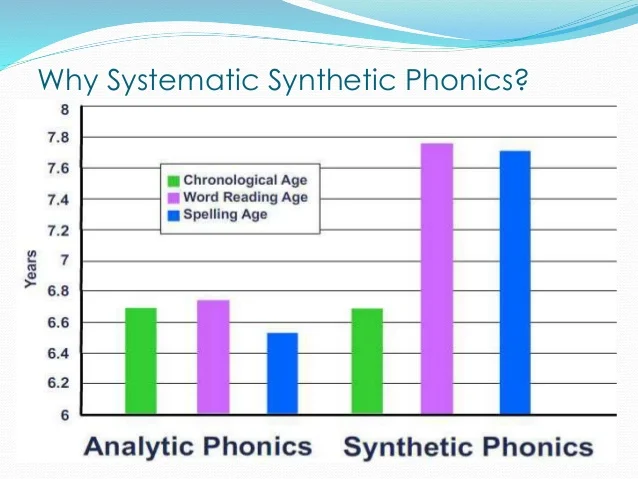
Introduction to Synthetic Phonics
Reading is a cornerstone of education, and the method by which children are taught to read can significantly impact their literacy development. One approach that has garnered attention for its effectiveness is synthetic phonics. This method emphasizes the systematic teaching of phonemes—the smallest units of sound—and their corresponding letters or letter combinations (graphemes). By learning to blend these sounds together, children can decode and read words effectively.
Understanding the Basics
In synthetic phonics, instruction begins with teaching individual letter sounds. For example, children learn that the letter 's' represents the /s/ sound, 'a' represents the /a/ sound, and 't' represents the /t/ sound. Once these associations are established, children are taught to blend these sounds together to form words like "sat." This blending process is fundamental to synthetic phonics and enables children to decode unfamiliar words by synthesizing the sounds associated with each letter or letter combination.

The Scientific Rationale Behind Synthetic Phonics
The effectiveness of synthetic phonics is supported by extensive research in cognitive psychology and educational studies. Understanding the science behind this approach can help parents appreciate its value and support their children's learning more effectively.
How the Brain Processes Reading
Reading involves complex neural processes where the brain converts visual symbols (letters) into sounds and then combines these sounds to recognize words and derive meaning. Synthetic phonics aligns with this natural process by teaching children to decode words systematically, reinforcing the neural pathways involved in reading.
Evidence from Research Studies
Numerous studies have demonstrated the efficacy of synthetic phonics in improving reading skills. For instance, systematic literature reviews in the USA and England have found that systematic, explicit phonics instruction is more effective than non-systematic methods, such as whole language approaches. These findings suggest that structured phonics instruction provides a significant advantage in early reading development.

Comparing Synthetic Phonics to Other Phonics Approaches
While synthetic phonics is a widely endorsed method, it's important to understand how it compares to other phonics approaches to appreciate its unique benefits.
Analytic Phonics
Analytic phonics involves teaching children to analyze whole words to detect phonetic or orthographic patterns and then apply this knowledge to other words. Unlike synthetic phonics, it does not emphasize the pronunciation of individual phonemes in isolation. Research indicates that synthetic phonics approaches have higher impacts, on average, than analytic phonics approaches.
Analogy Phonics
Analogy phonics teaches children to use parts of known words (word families) to read unfamiliar words by analogy. For example, knowing the word "cat" can help a child read "bat" and "rat." While this method can be helpful, it relies on a child's existing vocabulary and recognition of word patterns, which may not be as systematic as the synthetic phonics approach.
Embedded Phonics
Embedded phonics integrates phonics instruction into broader reading activities, such as reading a story and stopping to examine phonetic components. While engaging, this method may lack the structure that synthetic phonics provides, making it less effective for students who need explicit guidance.
Key Components of Effective Synthetic Phonics Instruction
Effective synthetic phonics instruction includes several critical elements that ensure learners grasp and retain phonics principles.
- Systematic Teaching: Phonemes are introduced in a structured sequence, building upon previously learned sounds.
- Explicit Instruction: Children are directly taught how to connect sounds with letters and blend them to form words.
- Daily Practice: Repetition and reinforcement through daily phonics activities ensure mastery and retention.
- Immediate Application: Students are encouraged to use decoding skills during reading and spelling tasks.

How Parents Can Support Synthetic Phonics at Home
Parents play a vital role in reinforcing synthetic phonics skills. Here’s how you can help your child thrive with phonics learning:
1. Use Phonics-Based Apps and Games
Incorporate educational games like Phonics Memory Match and Phonics Slam Showdown to make practice enjoyable.
2. Read Decodable Books Together
Choose books that align with the phonics sequence your child is learning. This helps reinforce decoding strategies and builds confidence.
3. Practice Blending and Segmenting
Have your child sound out and blend letters to form words, or segment words into individual sounds to spell them out.
4. Make Use of Flashcards
Use Alphabet Flashcards to review letter-sound relationships in a fun and portable format.

FAQs: Parents' Most Asked Questions About Synthetic Phonics
1. What age should children start synthetic phonics?
Children as young as 4 can begin learning phonics, starting with letter sounds and gradually blending them into words.
2. Can synthetic phonics work for struggling readers?
Yes! Research shows it is especially beneficial for children who face reading difficulties, including dyslexia.
3. How long does it take to see progress?
Many children begin decoding simple words within a few weeks of consistent instruction and practice.
4. What makes synthetic phonics different from other methods?
It teaches children to synthesize sounds to form words rather than relying on visual memory or guessing.
5. Is it okay to combine synthetic phonics with other methods?
While consistency is key, integrating phonics with rich reading experiences can enhance comprehension and vocabulary.
6. Are there free phonics tools available?
Yes, platforms like ABZ Learning offer many interactive games and printable tools at no cost.
Conclusion
Synthetic phonics is more than just a teaching strategy—it's a science-backed, evidence-based method that equips children with the tools they need for reading success. As a parent, understanding this approach empowers you to support your child's literacy journey meaningfully. Through consistent practice, engaging games, and effective strategies, you can help unlock the world of reading for your child.
Explore the full range of phonics tools, decodable readers, and interactive literacy games available at ABZ Learning to begin your child’s phonics adventure today!
